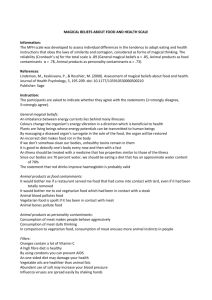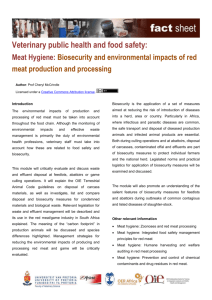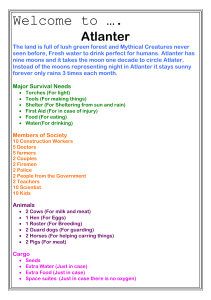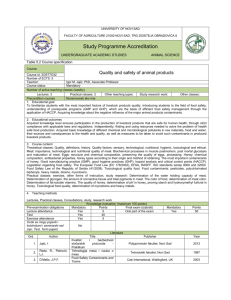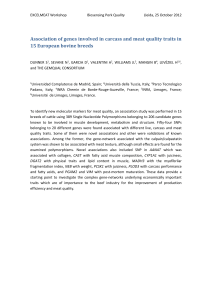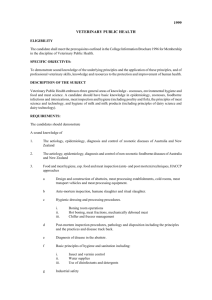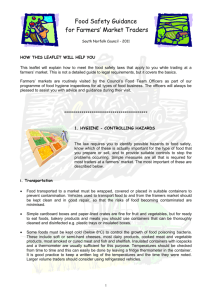meat_residues_fs
advertisement
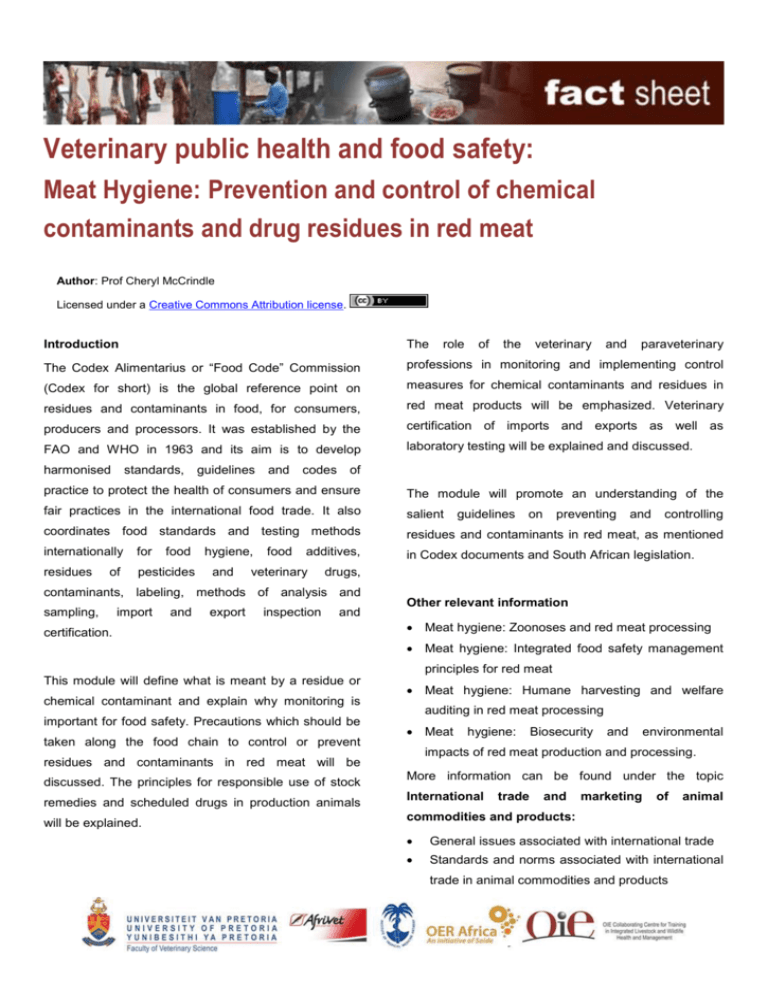
Veterinary public health and food safety: Meat Hygiene: Prevention and control of chemical contaminants and drug residues in red meat Author: Prof Cheryl McCrindle Licensed under a Creative Commons Attribution license. Introduction The The Codex Alimentarius or “Food Code” Commission professions in monitoring and implementing control (Codex for short) is the global reference point on measures for chemical contaminants and residues in residues and contaminants in food, for consumers, red meat products will be emphasized. Veterinary producers and processors. It was established by the certification of imports and exports as well as FAO and WHO in 1963 and its aim is to develop laboratory testing will be explained and discussed. harmonised standards, guidelines and codes role of the veterinary and paraveterinary of practice to protect the health of consumers and ensure The module will promote an understanding of the fair practices in the international food trade. It also salient coordinates food standards and testing methods residues and contaminants in red meat, as mentioned internationally for in Codex documents and South African legislation. residues pesticides of food hygiene, and food additives, veterinary import and export inspection on preventing and controlling drugs, contaminants, labeling, methods of analysis and sampling, guidelines and certification. Other relevant information Meat hygiene: Zoonoses and red meat processing Meat hygiene: Integrated food safety management principles for red meat This module will define what is meant by a residue or chemical contaminant and explain why monitoring is important for food safety. Precautions which should be taken along the food chain to control or prevent Meat hygiene: Humane harvesting and welfare auditing in red meat processing Meat remedies and scheduled drugs in production animals will be explained. Biosecurity and environmental impacts of red meat production and processing. residues and contaminants in red meat will be discussed. The principles for responsible use of stock hygiene: More information can be found under the topic International trade and marketing of animal commodities and products: General issues associated with international trade Standards and norms associated with international trade in animal commodities and products Assuring the biological safety of animal production (value) chains.

